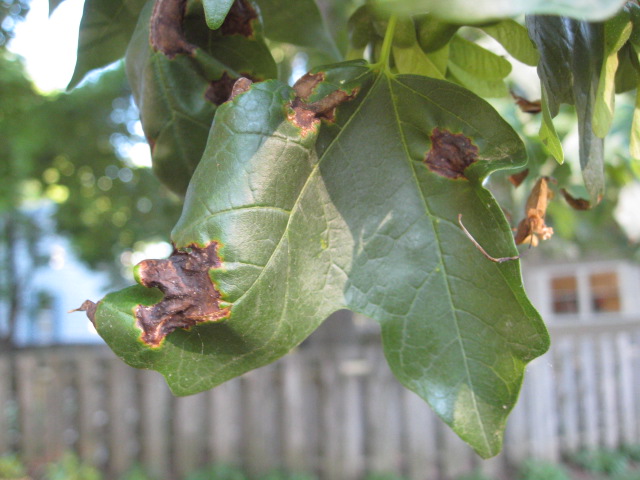Here is a quick update from Ward Upham and the Horticulture News:
We are starting to see anthracnose on sycamore. Anthracnose is a fungal disease favored by cool, wet weather. Young leaves may wither and turn black. On older leaves, look for brown areas that follow the major veins of the leaves. In some cases, the petiole (leaf stem) is infected, which causes leaf drop. The leaf may look perfectly fine, so look for browned areas on the petiole.
In severe cases, the tree drops heavily infected leaves and may be completely defoliated. Healthy trees will leaf out again in a few weeks. Defoliation this early in the year does not affect overall tree health. Trees have plenty of time to produce new leaves and make the energy reserves needed to survive the winter.
Other types of trees that are affected by anthracnose include birch, elm, walnut, oak and especially ash. Anthracnose seldom causes significant damage to trees in Kansas, so chemical controls are usually unnecessary. Also, fungicides do not cure infected leaves. Applying fungicides now will not help.
For a detailed overview of anthracnose diseases of shade trees, you can check out the free online pdf version of Diseases of Trees in the Great Plains. I’ve mentioned this book before – it is a great resource! Here is the link, and the anthracnose part is the section section, on p. 22 of the pdf.
Anthracnose is also covered in our Tree and Shrub Problems of Kansas book.

